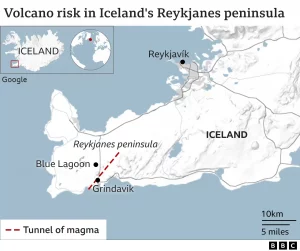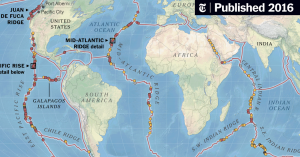ForumIAS announcing GS Foundation Program for UPSC CSE 2025-26 from 27th May. Click Here for more information.
Source: The post is based on the article “Seismic Activity in Iceland: As thousands of earthquakes rock Iceland, a volcanic eruption to follow?” published in “Down To Earth” on 15th November 2023
Why in the News?
Iceland is currently facing a notable surge in seismic activity, with about 1,400 earthquakes detected in the last 24 hours and over 24,000 recorded in the Reykjanes Peninsula since late October.
What are the reasons for seismic activity in Iceland?
1. Geological Location: Iceland is located on the Mid-Atlantic Ridge, where the Eurasian and North American tectonic plates meet. This geological setting makes Iceland prone to frequent earthquakes.
2. Magma Activity beneath the surface: The current surge in earthquakes is associated with magma activity beneath the Earth’s surface. This seismic swarm is seen as a precursor to potential volcanic eruption.
Where is the Reykjanes Peninsula?

Reykjanes Peninsula is located in southwestern Iceland. It is a region known for its geological activity, including the presence of the Mid-Atlantic Ridge.
Fagradalsfjall is situated approximately 40 km southwest of Reykjavík. It is considered the “world’s newest baby volcano”. After eight centuries of dormancy, it erupted in 2021, 2022 and 2023.
What is Mid-Atlantic Ridge?

The Mid-Atlantic Ridge(MAR) is a continuous mountain range running down the center of the Atlantic Ocean. It is a part of the longest mountain range on Earth.
It separates the North American Plate from the Eurasian Plate in the North Atlantic and the South American Plate from the African Plate in the South Atlantic.
Syllabus-Geography in News, Places in News




